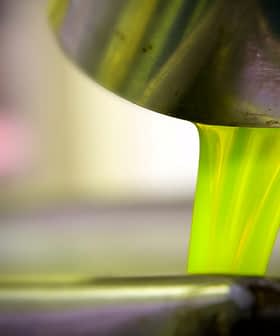The previously strong and ever-growing U.S. olive oil import market is taking a hit as the world grapples with Covid-19-fueled trade disruptions. Early 2020 import figures and World Trade Organization (WTO) projections show that imports have already slowed and won’t speed up again for some time.
According to U.S. Census Bureau data analyzed by WorldCity, the first signs of an import slowdown were first recorded in November 2019, when the total value of the imports fell below $80 million for the first time since 2014.
Imports to the United States totaled some $171 million in the first two months of 2020, a 13 percent decrease from the same period in 2019. More than one-third of the imports ($60 million) came from Italy, followed by Spain ($36 million), Tunisia ($27 million) and Portugal ($20 million).
See Also:Covid-19 Effects on Food SupplyStill, the overall 2018 and 2019 seasons saw record-high import volumes, with the total value for April 2018 alone reaching $150 million. In the last two years, the International Olive Council (IOC) estimated that U.S. imports exceeded 350,000 tons of olive oil and olive pomace oil — a 12 percent growth over the previous years.
Also during 2018 and 2019, 36 percent of the world’s olive oil exports were imported into the United States. Most of the imports came from Italy, particularly high-quality extra virgin olive oil, with Spain trailing close behind. IOC figures for 2018 and 2019 also hint at overall growth in imports from Turkey, Portugal and Tunisia.
The Covid-19 pandemic threw a wrench into that strengthening market. Both importers and exporters are facing new restrictions and complications in trade routes as the countries pivot to try to stem the spreading of the virus.
Italian olive oil producer Monini, a company that, in the past, has exported more than 40 percent of its product to Europe and the United States, is warning of rapidly growing costs for transportation.
“We are working double shifts,” said Monini CEO Zefferino Monini. “Domestic demand from households keeps growing, making up for the loss of the restaurant and public sectors. Orders from abroad [have] also increased substantially since February.”
Still, the fluctuating cost of moving goods within the European Union during the pandemic is forcing all olive oil supply chain stakeholders to continuously reshape their operations. Uncertain transportation dynamics, coupled with the reduced price of olive oil on the market, are lowering profit margins and compelling the major players to push for a reshaping of the overall operations of the major players in the field.
The next few months will be the hardest for the whole chain. The WTO estimates that all exports are destined to suffer double-digit declines in 2020, especially in the first half of the year. But there is good news, too — the WTO is also predicting a robust rebound for 2021.








